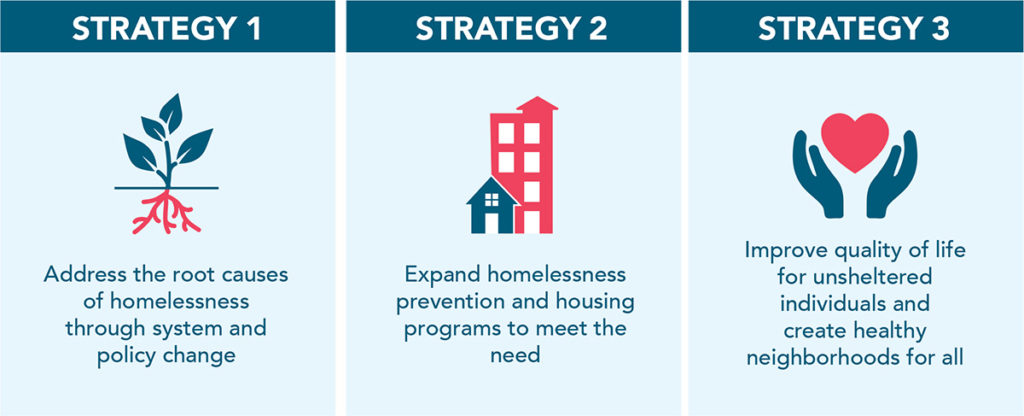When it comes to achieving true equity in our community, there is no issue more central than homelessness. Our unhoused neighbors represent the most marginalized and disadvantaged members of our community, whose daily struggles are far beyond what the average Silicon Valley resident could even imagine.
Our homelessness crisis itself is a direct result of our region’s vast inequities: an income and wealth gap that keeps widening, a drastic shortage of housing at the most affordable levels, and deep racial disparities that disproportionately push people of color into homelessness. The COVID-19 pandemic has only worsened these and other longstanding inequities at the root of our homelessness crisis and added new urgency to our collective efforts.
Yet, even as the challenge has grown, our supportive housing system partners are working heroically to advance important solutions to meet both the urgency of the moment and bring us one step closer towards the five-year goals of our new Community Plan to End Homelessness.
Progress on our Community Plan to End Homelessness
The arrival of the pandemic has made the implementation of our new Community Plan to End Homelessness all the more important, and over the past 12 months, the County of Santa Clara, City of San Jose and dozens of our Continuum of Care partners have:
- Quickly stood up several new temporary shelters and hotel/motel sites to bring thousands of vulnerable homeless individuals indoors (thank you to Abode Services, HomeFirst, LifeMoves and our other non-profit partners);
- Partnered with the Lived Experience Advisory Board, non-profits like ProjectWeHope, and dozens of volunteers to deliver meals, sanitation services, tents, tarps and personal protective equipment to individuals living in encampments; and
- Provided more than $36 million in rental and financial assistance to nearly 15,000 low-income households in need in partnership with 70 community organizations, led by Sacred Heart Community Service.
These efforts are a true testament to what’s possible when working together. And it’s not only been critical to assisting our homeless neighbors during this particularly vulnerable time, it’s also resulted in tangible progress towards our 5-year Community Plan goals.
We’ve housed more than 3,200 of our unhoused neighbors just last year, a strong start to our five-year goal with a growing pipeline of additional affordable housing underway.
Despite the initial need to reduce capacity to support social distancing at our shelters, our system has added hundreds of temporary housing and shelter beds and is rapidly progressing towards our goal to double our temporary housing and shelter capacity to reduce the number of people sleeping outside.
Our system is hard at work preventing a disruption in housing in the first place. We vastly expanded the number of families serve through our Homelessness Prevention System this year and continue growing the system’s ongoing capacity, with the goal to reduce the number of people becoming homeless each year by 30% in the next five years.
Read more on this progress in the State of the Supportive Housing System Executive Summary.
In addition, we continue to see signs of progress in our collective efforts to build more deeply affordable housing in our community.

Santa Clara County recently approved five new 100% affordable developments, growing our system’s pipeline of new homes, propelled forward by the Measure A bond passed by voters in 2016. In just four years, Santa Clara County has funded the creation of 3,000 new deeply affordable homes with these funds–like the Monterey Gateway Apartments in Gilroy, now home to 75 low income seniors.
However, we know we have so much work to do to meet the magnitude of the crisis before us.
Taking the Next Steps in Implementing our Community Plan

Despite our community’s efforts, the crisis continues to grow. For every Santa Clara County unsheltered neighbor connected to permanent housing, 2-3 more become newly homeless at our current rates.
So, while we continue to scale our effective interventions above, we must take meaningful steps towards addressing the root causes that are really driving this crisis:
- We need to continue ramping up the production of more deeply affordable housing so all members of our community have access to safe and stable housing;
- We need to address the huge income and wealth gap that perpetually pushes our lowest-income and most vulnerable families to the brink, and;
- We need to eliminate systemic racism and the longstanding policies that continue to disproportionately push people of color into homelessness.
These are just a few of the elements of Strategy 1 of the 2020-2025 Community Plan to End Homelessness, and we need your help to drive these important systems and policy changes.
All of us – residents, elected officials, businesses, nonprofits and community groups – have an important role to play in ending homelessness in Santa Clara County. The County of Santa Clara, along with the Cities of San Jose, Mountain View, Morgan Hill, Milpitas, and Santa Clara have all unanimously adopted the Community Plan to End Homelessness, committing to further solutions to our homelessness crisis. Working groups are also forming around each of the 3 main strategies of the Community Plan. And our Housing Ready Communities initiative continues to engage residents across the county.
Learn more about the Community Plan to End Homelessness and contact us to get involved today!


